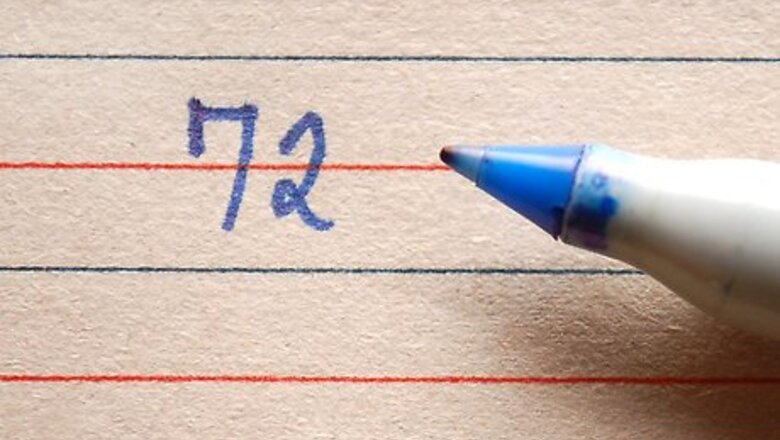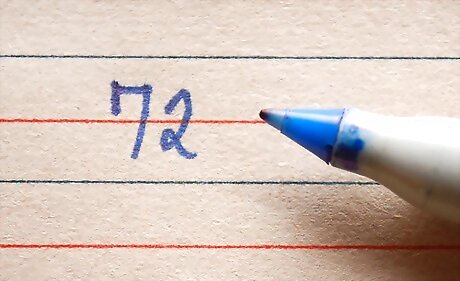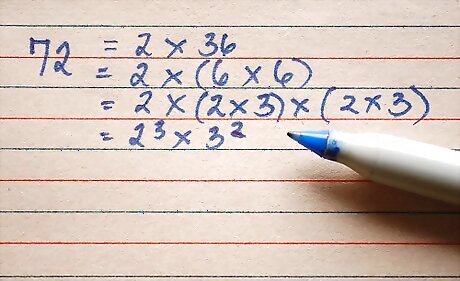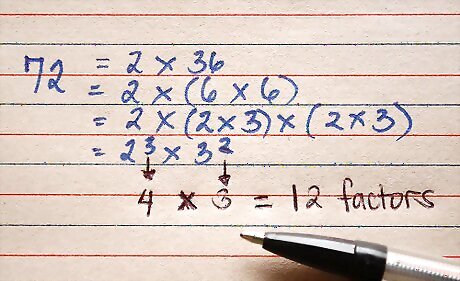
views
X
Research source
But for larger numbers, you can't just count one by one. This is a nice trick to find how many factors are in an integer.

Identify the number. Any number in the world, but it's best to start with the simpler ones. Take 72, for example, but the number could be denoted by a variable.

Calculate the Prime Factorization of the number. There are many methods of doing this, but usually, the simplest way is to make a factor tree. This works because according to number theory, every integer (except -1, 0, and 1) has a number of prime numbers that, when multiplied together, will equal the number. Remember that 0 and 1 are not prime numbers. 72 should be factorized into 2 and 36, 2, 6, and 6, and finally, 2, 2, 3, 2, 3, which equals 2*3.

Take all the exponents and add one to each of them. In the example 2 and 3, the exponents are 3 and 2 - adding one to each will make them 4 and 3.

Multiply the modified exponents together. 4 x 3 = 12. There are 12 factors for the number 72 - 1, 2, 3, 4, 6, 8, 9, 12, 18, 24, 36, and 72.



















Comments
0 comment